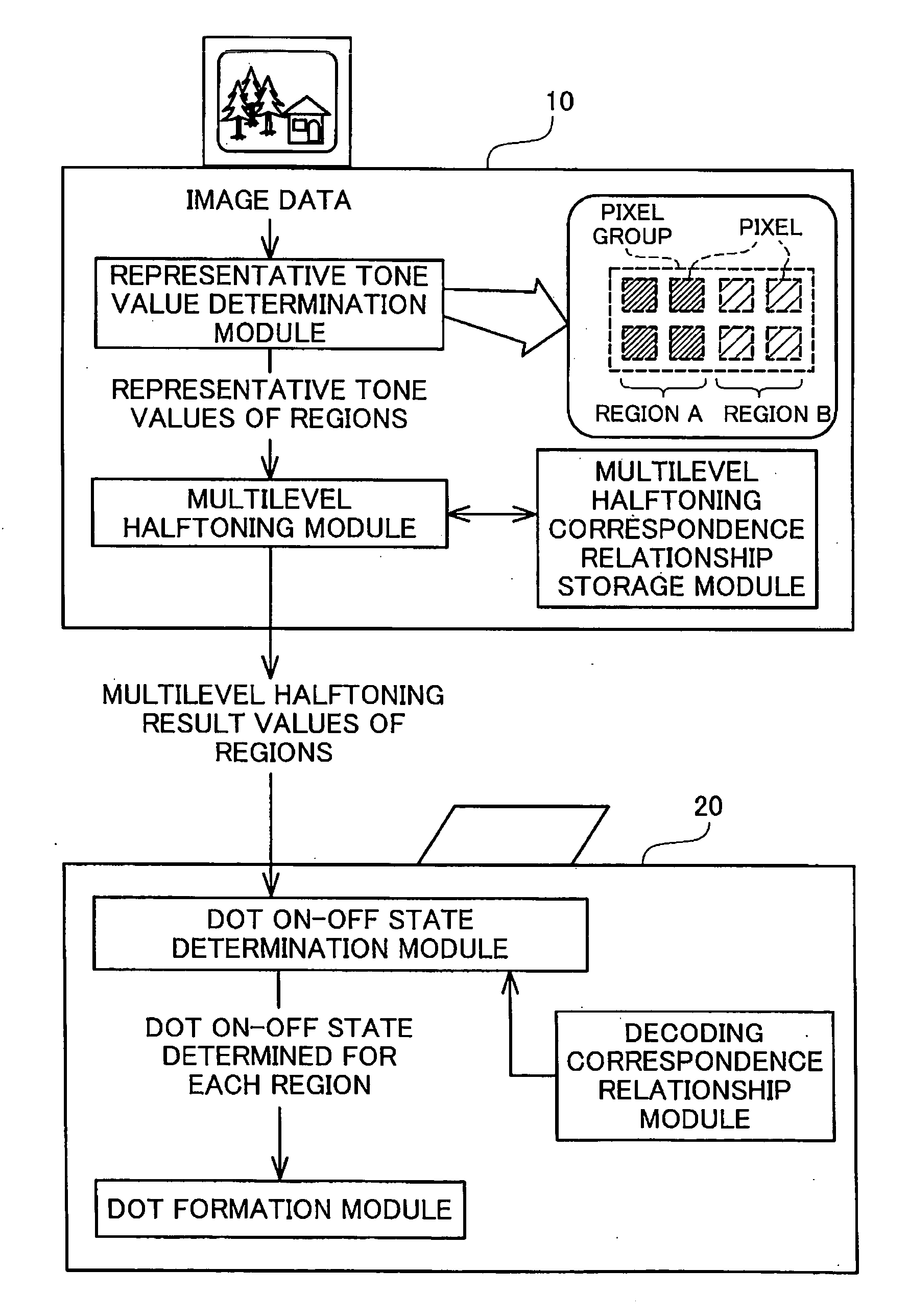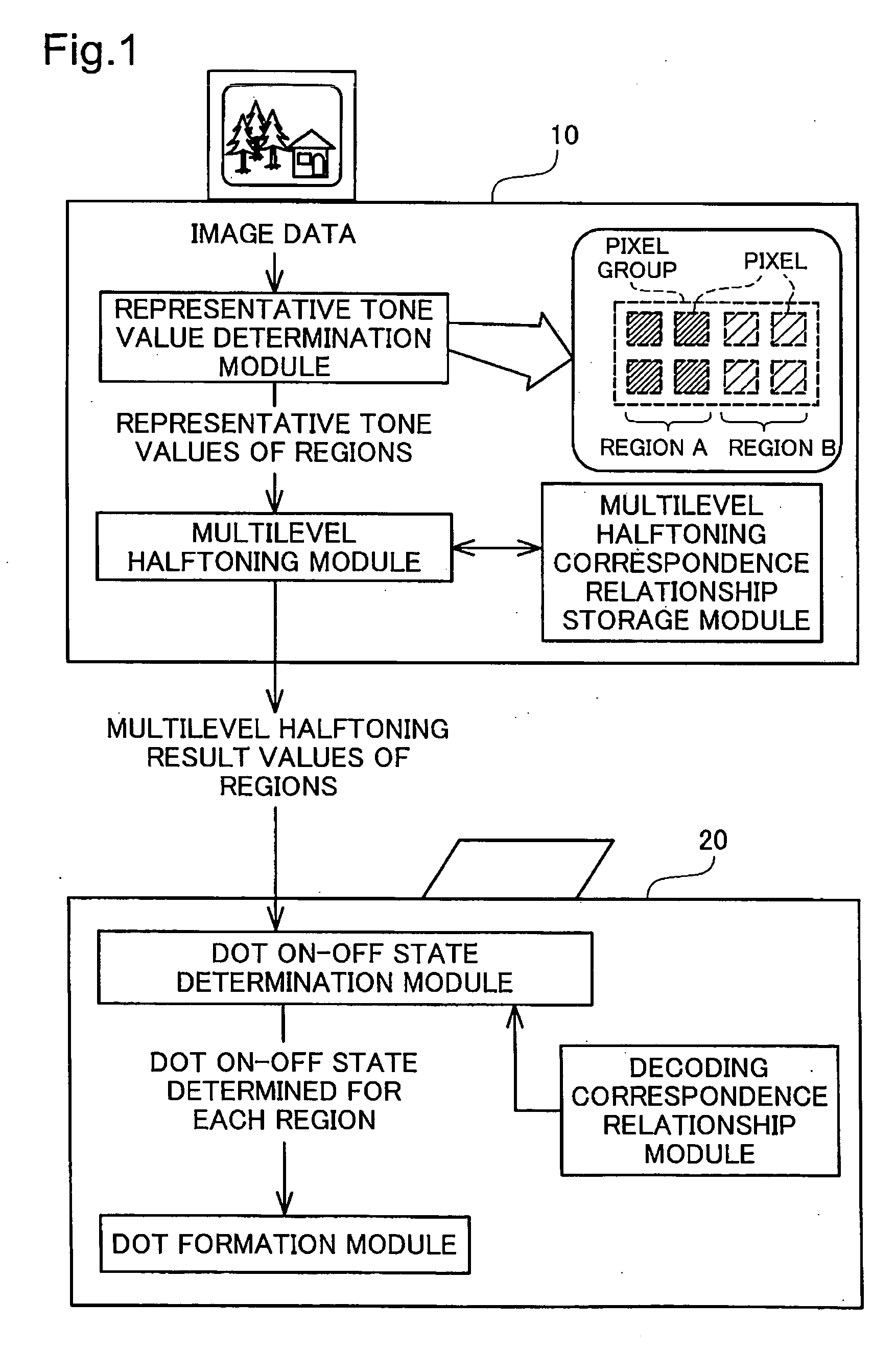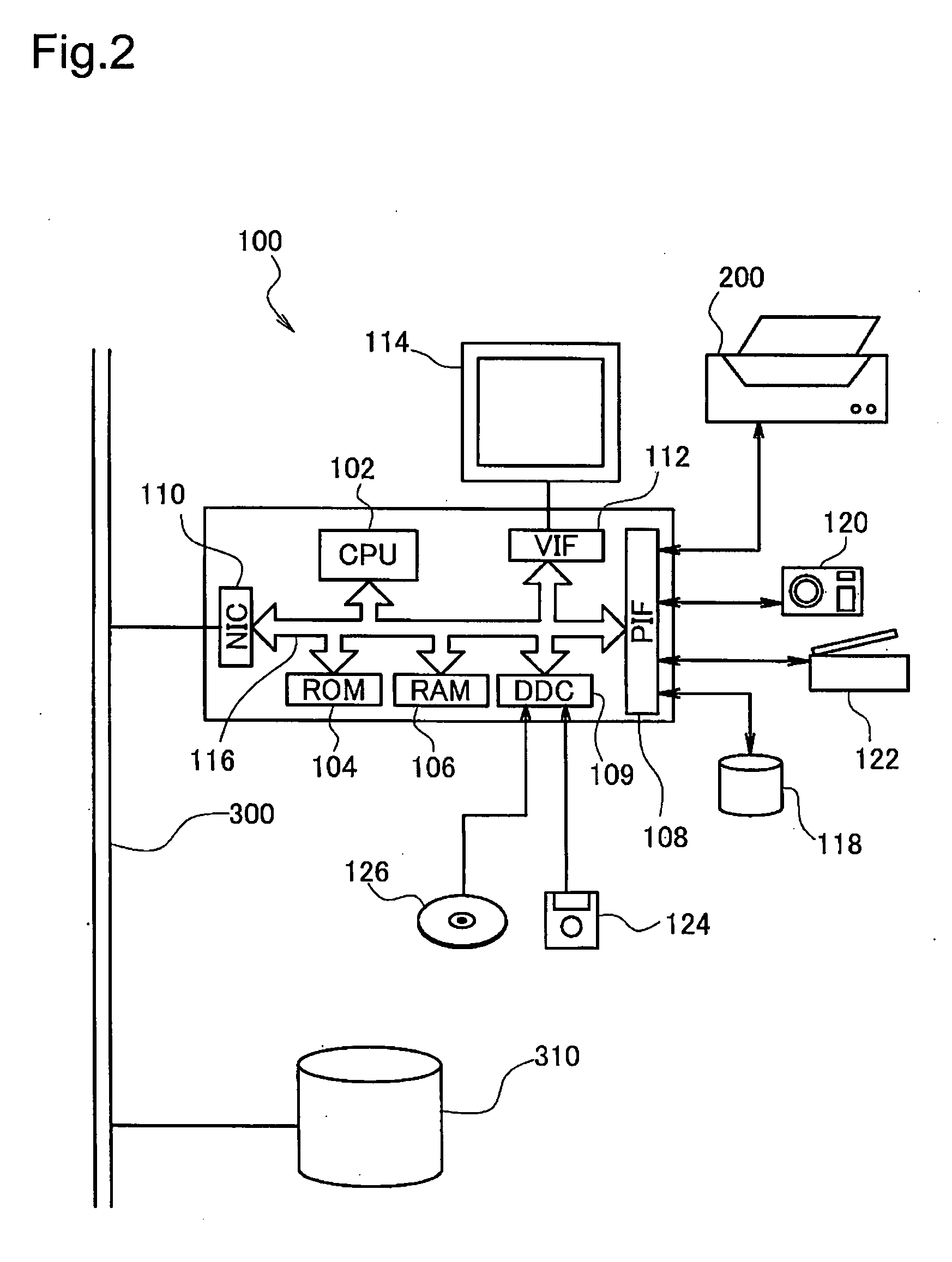Image processing system, image processing device, dot data processing device, and method and program product therefor
a technology of image data and image processing system, applied in the field of image processing system, can solve the problems of limiting the effectiveness of the aforementioned technology in speeding up the output of images, requiring more time for image processing, so as to achieve rapid output of images and high picture quality
- Summary
- Abstract
- Description
- Claims
- Application Information
AI Technical Summary
Benefits of technology
Problems solved by technology
Method used
Image
Examples
first embodiment
C. Overview of Image Printing Process of
[0142] C-1. Basic Principle by which Pixel Location is Determinable from Count Data:
[0143] C-2. Multilevel Halftoning Result Value Creation Process of First Embodiment
[0144] C-3. Classification Number Determination Process:
[0145] C-4. Multilevel Halftoning Table
[0146] C-5 Data Format of Multilevel Halftoning Result Values
[0147] C-6. Dot On-off State Determination Process of First Embodiment:
[0148] C-7. Alternative Embodiments of First Embodiment:
second embodiment
D. Second Embodiment
[0149] D-1. Overview of Image Printing Process of Second Embodiment:
[0150] D-2. Multilevel Halftoning Result Value Creation Process of Second Embodiment: [0151] D-2-1. Large / Medium / Small Dot Count Determination Process Using Dither Method [0152] D-2-2. Specifics of Multilevel Halftoning Result Value Creation Process of Second Embodiment:
[0153] D-3. Dot On-off State Determination Process of Second Embodiment:
third embodiment
E.
[0154] E-1. Multilevel Halftoning Result Value Creation Process of Third Embodiment:
[0155] E-2. Dot On-off State Determination Process of Third Embodiment:
[0156] E-3. Multilevel Halftoning Table Setup Process of Third Embodiment:
E-4. Modifications of Third Embodiment:
[0157] A. Overview of the Embodiments:
[0158] Before proceeding on to a detailed description of the embodiments, an overview of the embodiments will be described. FIG. 1 is an explanatory diagram depicting an overview of the embodiments, taking the example of a printing system. The printing system comprises a computer 10 as the image processing device, and a printer 20 as the image output device; when a specific program is loaded and executed by the computer 10, the computer 10 and the printer 20 function as a whole as an integrated image processing system. The printer 20 prints images by forming dots on a print medium. The computer 10 performs specific image processing of image data for images to be printed, and...
PUM
 Login to View More
Login to View More Abstract
Description
Claims
Application Information
 Login to View More
Login to View More - R&D
- Intellectual Property
- Life Sciences
- Materials
- Tech Scout
- Unparalleled Data Quality
- Higher Quality Content
- 60% Fewer Hallucinations
Browse by: Latest US Patents, China's latest patents, Technical Efficacy Thesaurus, Application Domain, Technology Topic, Popular Technical Reports.
© 2025 PatSnap. All rights reserved.Legal|Privacy policy|Modern Slavery Act Transparency Statement|Sitemap|About US| Contact US: help@patsnap.com



